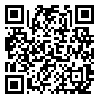Mon, Dec 8, 2025
Volume 2, Issue 1 (Spring 2012)
PTJ 2012, 2(1): 57-61 |
Back to browse issues page
Download citation:
BibTeX | RIS | EndNote | Medlars | ProCite | Reference Manager | RefWorks
Send citation to:



BibTeX | RIS | EndNote | Medlars | ProCite | Reference Manager | RefWorks
Send citation to:
soleimanifar M, Arab A M. Relationship Between Single Motion Palpation and Provocation Tests in assessment of SacroiliacJoint disorder. PTJ 2012; 2 (1) :57-61
URL: http://ptj.uswr.ac.ir/article-1-35-en.html
URL: http://ptj.uswr.ac.ir/article-1-35-en.html
1- PT Student Research Committee
2- Physical Therapy department, University of Social Welfare and Rehabilitation Sciences
2- Physical Therapy department, University of Social Welfare and Rehabilitation Sciences
Abstract: (6870 Views)
Objectives: Disorders of the sacroiliac joint (SIJ) and related structures have been implicated as a potential source of low back and buttock pain. Several types of motion palpation and pain provocation tests are used to evaluate patients suspected of having SIJ disorder. This study is a Descriptive- Correlational Design to investigate the relationship between single motion palpation and pain provocation tests in assessment of sacroiliac joint problems. Material and method: 25 patients between the ages of 20 and 65 (mean age = 4310 years) participated. Three motion palpation tests (Sitting flexion test, Standing flexion test, Gillet test) and three pain provocation tests (FABER, Posterior shear, Resisted abduction test) were examined in both sides (left, right) in all subjects. Chi-square analysis was used to assess the relationship between results of the individual motion palpation and pain provocation tests. Results: According to the results of Chi- square analysis, no significant relationship was found between the tested motion palpation and pain provocation tests. Conclusion: It seems that motion palpation tests assess the SIJ dysfunction and do not demonstrate the source of pain. Also provocative tests assessed SIJ pain which is not related to the reason of SIJ dysfunction.
Type of Study: Research |
Subject:
Sport injury and corrective exercises
Received: 2012/07/23 | Accepted: 2012/09/11 | Published: 2015/06/13
Received: 2012/07/23 | Accepted: 2012/09/11 | Published: 2015/06/13
Send email to the article author
| Rights and permissions | |
 |
This work is licensed under a Creative Commons Attribution-NonCommercial 4.0 International License. |



